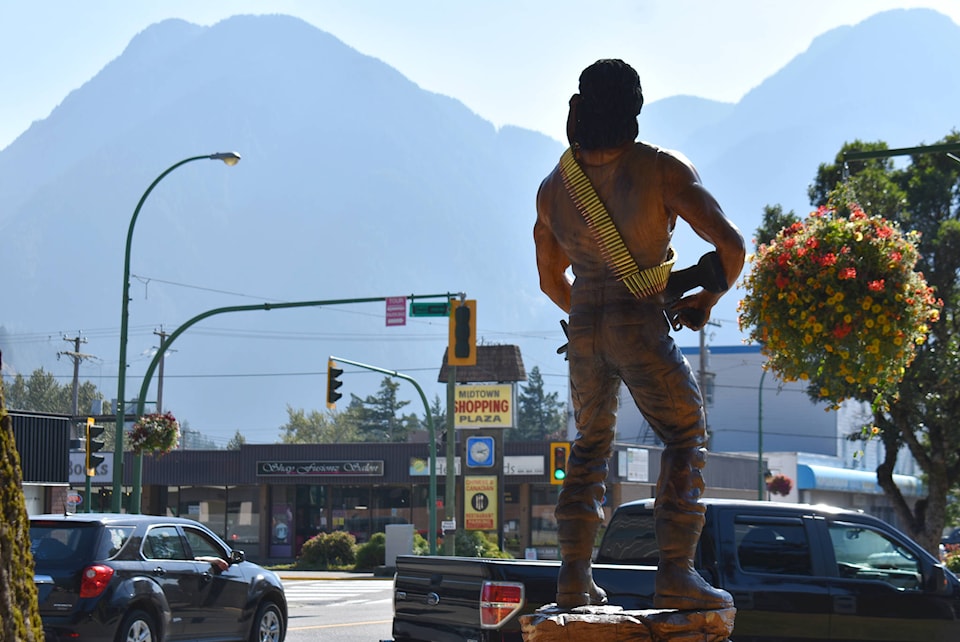The District of Hope is asking for feedback on the third draft of a five year economic development plan.
The plan will guide the work of AdvantageHOPE, the community’s tourism and economic development organization, over the next five years. It covers the kinds of industries the district is looking to attract, how to continue to build Hope as a tourist destination, as well as how to make downtown and other commercial areas more attractive to visitors and investors.
Some of the overall goals of Hope’s economic development efforts include growing Hope’s population, providing a base of sustainable jobs locally as well as diversifying the community’s economic base. As well, creating a vibrant downtown core, protecting the quality of life that Hope is known for as well as getting the community recognized as a provincial tourism destination are stated goals.
Identified in the strategy are sectors that are both realistic business opportunities given Hope’s land and resources and would contribute to Hope’s economy. These include the “creative class (artisans, crafters, online proprietors, web designers, graphic designers, etc.)”, “clean water industries (craft beer, distillery, bottling/export)”, Liquified Natural Gas, hospitals, healthcare and respite care, amenity development, and green building.
To foster a good business climate, the strategy advocates for bylaws that will support opportunities in sectors such as light and green industry, as well as development incentives for commercial land in Silver Creek. While the demand for industrial land in Hope is not strong, the strategy states that preparation of such land, as well as land available for workforce housing, for demand which is expected to grow as demand in the Fraser Valley and Metro Vancouver grows.
2021-2026 Draft Economic Development Strategic Plan by Emelie Peacock on Scribd
Hope has a competitive advantage as it is located at the juncture of major highways. To improve on this advantage, the strategy calls for improvements of exits into Hope as well as making commercial areas more pedestrian friendly by improving “sidewalks, lighting, traffic crossings, connectivity of walking routes” with a focus on 6 Avenue, Old Hope Princeton Way, Water Avenue and the pathway over Richmond Hill to Silver Creek.
To improve Hope’s position as a tourism destination, the plan calls for supporting efforts in developing mountain biking trails, walking and hiking trails and beautification of downtown. AdvantageHOPE is now also able to use the 2 per cent municipal and regional district tax collected by local accommodation providers to support tourism marketing efforts.
Another way to attract tourists is to have a community designated as a resort municipality, which Hope is preparing to do. A total of 14 B.C. municipalities have this designation including the neighbouring Village of Harrison Hot Springs, as well as Tofino, Ucluelet and mountain towns Fernie, Invermere and Radium Hot Springs.
Development of Hope’s downtown is one of the district’s strategic priorities. It is a downtown that has been changed as highways are developed and residents gain easier access to shopping in down-Valley communities. The plan calls for surveying land and building uses downtown, as well as identifying vacant and unused buildings as well as parking and the attractiveness of storefronts and public spaces. Recommendations also include installing a downtown visitor services kiosk, parking for RVs as well as street banners.
One of Hope’s major assets is its local volunteer base, the plan stated, and the plan calls for supporting local volunteer efforts. Other recommendations include supporting local artists to create “distinctive artwork for public spaces that builds on Hope’s scenic attributes.”
Improvements to the transportation system are an area that needs to be advocated for, the plan stated, including advocating for a shuttle service that can be used by seniors or groups with mobility concerns.
Another area of focus is improving the education and training available in the community. This can be done, the plan stated, by building relationships between the University of the Fraser Valley and the Fraser Cascade school district, attracting vocational or trades training to Hope and looking at options for affordable student housing. With the COVID-19 pandemic resulting in a shift to online learning, the opportunity exists to have students move here and do studies online or have local students complete their studies online instead of moving out of the community.
With this shift to online learning and work, Hope also has the fibre optic technology and the relatively inexpensive real estate to take advantage of the trend of businesses moving from cities to rural communities the report stated. To facilitate this, the report recommends engaging with realtors in various ways, as well as working with the district on zoning opportunities and land inventory.
Residents can submit comments or questions on the plan to John Fortoloczky, Chief Administrative Officer via cao@hope.ca or faxed to his attention at 604-869-2275. They can also send these to the District of Hope (Box 609, Hope, BC V0X 1L0) or deliver them to district hall (325 Wallace St.). Comments and questions should be delivered before 4 p.m. on Dec. 18.
Copies of the plan can be viewed online at hope.ca or at district hall.
Do you have something to add to this story, or something else we should report on? Email:
emelie.peacock@hopestandard.com
